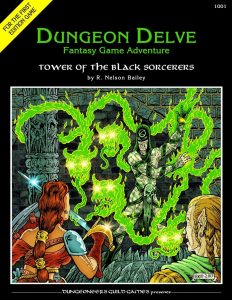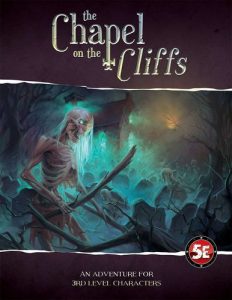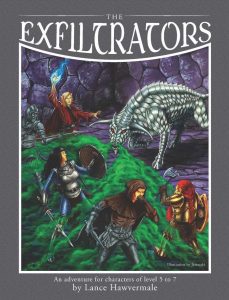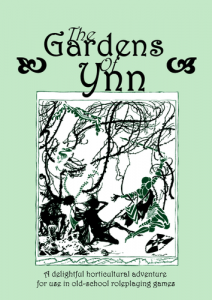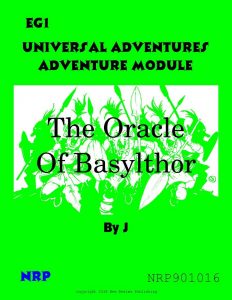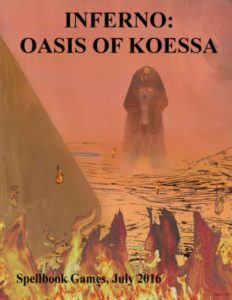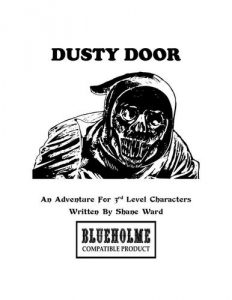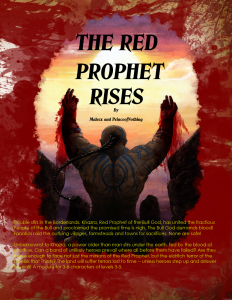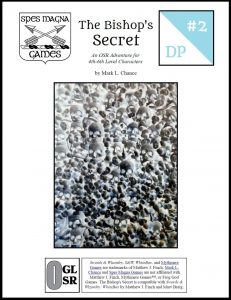
By Mark Chance
Spes Magna Games
Swords & Wizardry
Level 4-6
Bishop Pausanias, gray haired with merry blue eyes and respectable girth, has long been one of the city’s pillars. He is famed for his charity and the holy protection he exercises over his city. So why do ghouls stalk the city at night? Why, on moonless nights, do zombies shuffle down streets, and what horror murders the faithful in their sleep? What is The Bishop’s Secret?
This eleven page adventure details a small nine romo underground tunnel complex and a bit of plot in the city above. It’s got a nice undead vibe going on, and the city intrigue is explained in just enough detail to make it work well. The writing style, though, is conversational. You’ll need a highlighter, and there’s no room in my new condo for a highlighter.
This thing is above average in a couple of areas. First, it provides some good summary information for a plot in town. The adventure is basically just a nine room dungeon, but the little bits provided before the dungeon description provide a nice little overview of ways to involve the party. A gang of thugs the bishop uses when he needs people. Corrupt priests. Dead walking in the streets. It’s just a little, but it’s enough for the DM to craft something around that’s a little more than a throw-away investigation. It’s a decent way to handle the context of the dungeon. This kind of matches my view on hooks. Either you don’t include them or you make them more than “You are caravan guards.” You don’t have to write a book, but a few specifics in order to get the DM’s imagination going seems to be the correct amount of length.
It also does a pretty good job of painting a picture of an Undead adventure. Muddy tunnels with water in them. Low. Cramped. Claw marks here and there. The smell of rot. Weird echoing sounds. It does a good job of providing some atmosphere for the DM to work with. A bowl stained by blood from gory libations. It’s decent text.
It’s also buried in a conversational writing style. “IF characters speak in this chamber” is a classic example of IF THEN writing style, a kind of indirect style that pads text out. “As with the Mausoleum of the Patriarchs, the gated area to the spiral stairs leading down to this area is kept locked.” Well, yes, I lie the idea of a locked gate in a church leading down to the crypts. But the first clause is, again, just padding. I’d have liked to see better editing and use of whitespace to separate out descriptions from mechanics.
The treasure also seems quite light for a gold=xp system. It feels more like the token “treasure parcels”of 5e than the riches of gold/xp.
This is clearly trying, but the organization of the text is far too … loose for me. You have to make an effort, find a highlighter, etc. I choose Pikachu instead.
This is $2 on DriveThru. The first few pages of the preview are good examples of what you get … and in fact the entire adventure is there in the preview. The second and third page shows you the loose information for the town data/plot that I liked so much. The fourth page onward shows you the adventure and the writing style in the rooms that I think is too loose. https://www.drivethrurpg.com/product/239435/DP-2-The-Bishops-Secret?affiliate_id=1892600

